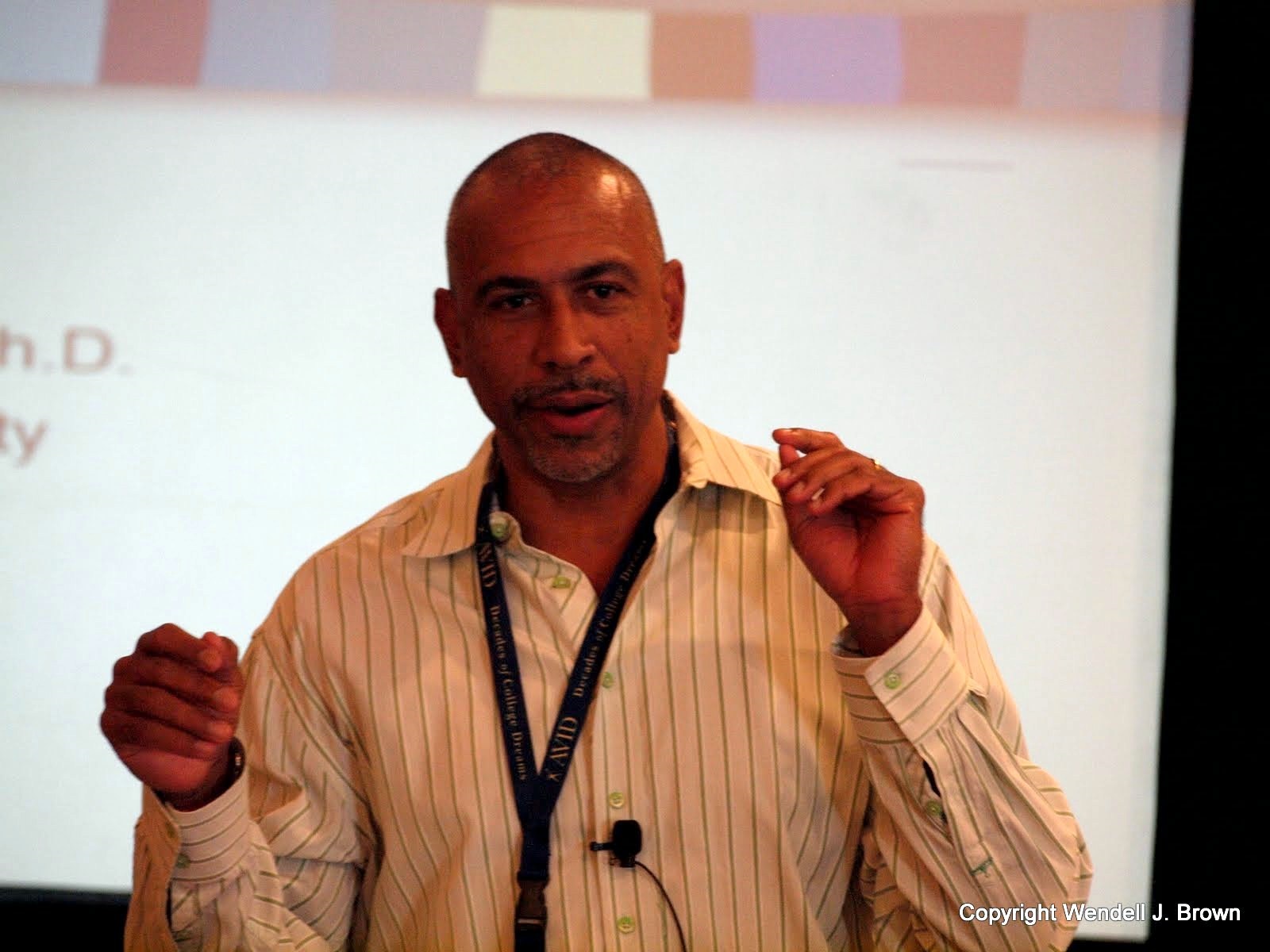AVID Center’s Urban Success Imperative
 AVID Center
AVID Center  Friday, March 1, 2013 at 1:59PM
Friday, March 1, 2013 at 1:59PM By Rob Gira, Executive Vice President, AVID Center

In a previous blog, I described our AVID Center board retreat, where we determined three imperatives we will focus on for the next few years. These are: 1) Reaching more students directly and supporting their college readiness with technology; 2) Accelerating our schoolwide college readiness efforts; and 3) Working more effectively with urban districts.
In this post, I am going to detail some of our plans for more effective urban strategies and will also discuss some of the thought leaders who are influencing our work.
In our service to some 900 school districts in the U.S. , we have learned that all districts—whether they are rural, suburban, or urban—are unique, influenced by the culture of their community, the strength of the leadership of their school board and in their district, and their geographical location, among other factors. In listening to educators and the public in general over the years, I have discovered that many fall into the mindset that urban districts are too challenging, that urban families are, as a rule, less interested in the education of their children, and that large urban districts, in particular, are such monolithic bureaucracies that they defy any attempt at improvement.
In studying the list of districts that are members of the Council of Great City Schools (nearly 70 in number), I noticed that AVID is implemented in schools in the vast majority of those districts, and that they defy any of the previously stated negative stereotypes. Moreover, the schools are all quite different from one another. However, the districts I know well do have one key factor in common: excellent leadership from the superintendent throughout the ranks manifested in caring and capable classroom teachers and their principals.
Today, more than ever, we need those caring and capable teachers in our urban schools. Currently only one in ten Latino men graduate from college. That shocking statistic led filmmaker Graham Streeter to create Boys in Peril, a documentary that details the struggles young Hispanic males face on their path to college. In the film, Streeter follows three AVID students from Bell Gardens High School as they deal with the struggles that are so common to many students in our urban schools. The Hispanic male population in our urban districts is but one student group that needs our attention if we are to improve education in these areas. Bell Gardens is doing the job.
During our board retreat, we heard from a number of experts, whose presentations, discussions, and written material moved us forward in thinking about how to better serve our urban clients. These thought leaders included Dr. David T. Conley, one of the foremost experts on college and career readiness; Dr. Steve Murdock, renowned demographer; Heather Staker and Michael Horne, from Innosight, a group doing outstanding work on e-learning, among other efforts; and Dr. Pedro Noguera, one of our most recognized experts on urban education and equity.
These experts provided a framework that small groups of AVID staff have utilized to develop goals and plans for our initiatives. In the Urban District Initiative our goals (slightly abbreviated here) include: 1) Strengthening AVID’s ties to urban district communities; 2) Developing feasible structures for both AVID Center and the district, so that we can train larger numbers of educators; 3) Design approaches to specifically engage a growing Latino population; 4) Build an AVID infrastructure dedicated to urban success; and 5) Identify other organizations that are working effectively with urban districts.
With a great deal of experience in working with urban communities, Dr. Pedro Noguera (who has been a keynote speaker at AVID National Conferences and has written for our journal ACCESS and has been interviewed for that publication as well) provided a wealth of information on students attending urban school districts.
Noguera is the author of numerous books on equity, gender challenges, urban communities, and the achievement gap. His most recent book is Invisible No More: Understanding the Disenfranchisement of Latino Men and Boys.
 Dr. Pedro Noguera
Dr. Pedro Noguera
In an interview with him several years ago, I asked him about the challenges faced by urban districts. He replied that, “The main problem with large districts is scale. They are just so large that they are subjected to a host of political problems, including turnover in leadership…”
Noguera also took note of overcrowded schools, large class size, and unfulfilled basic needs like cleanliness of schools and student health. “More importantly,” he added, “middle class, suburban schools feel accountable to the parents they serve because these parents have such a strong sense of entitlement and will demand more.”
During his retreat presentation, Noguera reminded us about the needs of urban districts and the children they serve. His assertions are relevant to urban settings, but apply more broadly, including:
- Poverty is not a learning disability, but it can be a disadvantage if we ignore students’ needs. To add our own AVID editorial to this, our staff note that “Poverty is a challenge, and overcoming challenges builds determination, persistence, and what some call ‘grit.’”
- We must focus on creating a culture of learning.
- Don’t blame students for their backgrounds.
- Let’s figure out what it takes to educate the children we serve, then identify the skills our teachers must have to teach them.
- Schools can be the “anchors” of their communities if they can help students develop the desire to learn.
- Character traits are more predictive of success than test scores.
Noguera’s message to AVID is that we must strike the right balance between technical work and adaptive work, as Ron Hiefitz notes in Leadership on the Line. Our focus should be on the dynamic and complex nature of the work, its substance, meaning, and purpose. We want commitment, not compliance. He challenged us to look for key partners who can help us address the basic needs of students, the “whole child,” and that we will need concrete strategies for increasing student success, and especially for building the capacity of schools to meet student needs.
We often talk about “student engagement,” but Noguera breaks the concept down into behavioral engagement (effort and persistence); cognitive engagement (deep processing and metacognition); and motivation engagement (allow for interest, value, and affect).
Finally, as he has discussed in his book, The Trouble with Black Boys:…And Other Reflections on Race, Equity, and the Future of Public Education, he emphasized that we can better serve African American and Latino males by educating them about their own history and culture; personalizing interventions; connecting them to school by extracurricular activities; channeling their energy, not crushing it; and by providing leadership opportunities.
“Remind them that being smart is about effort,” he said.
As we develop plans to have a larger scale impact in urban districts, Noguera’s work and research will play a significant role in our efforts.
Reader Comments (3)
Rob: The issues and efforts that AVID are our constant concern here at King Chavez Neighborhood of schools. Also, the insights that Noguera shared are our primary focus at the high school. My own observations this year have led me to be concerned much more about the plight of our boys: how we reach them and support them one we do. Our schools motto:"We seek excellence in academics art and athletics on a foundation of love" illustrates what matter most: The love is the bedrock which any academic success is to be built. And this love is not always pink and fuzzy, but rather committed and relational, much like Espinoza's elements of Pivotal Moments. These kids crave someone committed to them over time, who cares and wont give up on them.
Thank you for your thoughtful and detailed post about what AVIDs plans are. I am curious now that it is December how much progress have you made? Is AVID where you thought it would be at the this time of the year? Have you been able to been strengthen ties and engage with the growing Latino population? I image that that is especially important in San Diego with its proximity to Mexico.
Hi Lauren,
Thank you for your comment! AVID Center recently posted a position for a Director of the Urban Success Imperative. So, we are still very much in the planning phase, but once this position is filled, we will be sure to give updates on progress! Thank you so much for reaching out. If you'd like more information, feel free to email us at marcomm@avid.org.
AVID Center